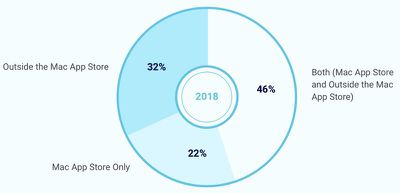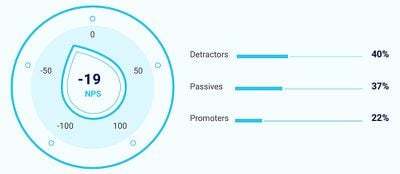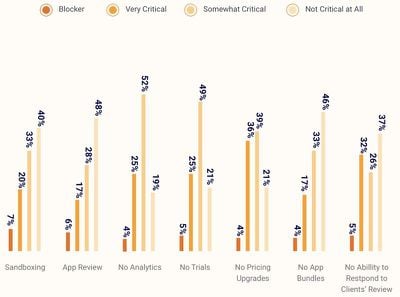Setapp, a company that offers a subscription service for Mac apps, today published the results of an annual survey querying Mac app developers on the state of the Mac App Store.
Many Mac developers continue to be unhappy with the Mac App Store and fewer are choosing it for app distribution, but Apple's efforts to improve the Mac App Store in Mojave have improved opinions in some cases. To get the data for this survey, Setapp queried a total of 814 developers.
Just 22 percent of Mac app developers choose to distribute their apps exclusively through the Mac App Store. 32 percent, up from 30 percent last year, distribute their apps outside of the Mac App Store entirely, while 46 percent sell their apps both in the Mac App Store and outside of the Mac App Store.

Developers continue to make more money outside of the Mac App Store for the most part, with 59 percent earning more revenue without the Mac App Store and 41 percent earning more money through the Mac App Store.
Despite the fact that fewer Mac developers are using the Mac App Store, among those who do exclusively sell through the Mac App Store, overall opinion has improved. Those who sell outside of the Mac App Store and both through the Mac App Store and outside of it also had a higher overall opinion, though it still trends toward the negative.

51 percent of developers surveyed said that providing Apple with a 30 percent cut of revenue is worth it, an impressive jump from the 31 percent that said the same thing in 2017.
Compared to 2017, when developers were upset with Apple's sandboxing practices and named it as a key reason for avoiding the Mac App Store, opinions have improved. Sandboxing is no longer seen as a critical issue.

Developers are, however, concerned with a lack of pricing upgrade options, no analytics, and an inability to offer trials.
Developers who do not choose the Mac App Store said they avoided it because of the unclear app review process, 30 percent revenue share, and lack of trials.
This year, 20 percent of developers decided to switch to a subscription model for their apps, and 52 percent of those said that it had an overall positive impact on their business. Of those using subscription models, increased revenue and an active growing user base were cited as positives.
Full details and comparisons between data collected in 2016 and 2017 can be viewed on Setapp's survey website, which also includes details on how developers view the Setapp service.




















Top Rated Comments
Am I in a minority who seems to have used the MAS quite a bit? A quick count shows I've downloaded 141 apps through it (Since Jan 2011).
Whenever I purchase Mac software, if the developer sells in both ways, I always choose the non-App Store purchase method. Any minor conveniences to the casual users who the App Store was designed for is passed on in spades to the developers and experienced/advanced users in the form inconveniences, compromises, and constraints.
If there were built-in upgrade paths (NOT subscription models) then I would take a second look at the Mac App Store.
I hate how Apple thinks the subscription model should just work for all devs. It does not work for our product, and it sucks because we can’t take advantage of the 15% cut that devs who use subscriptions get.
Of course, this was not asked?